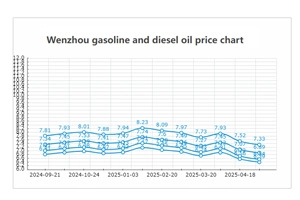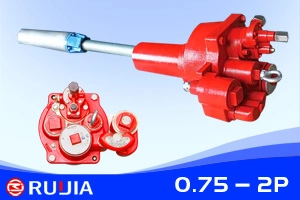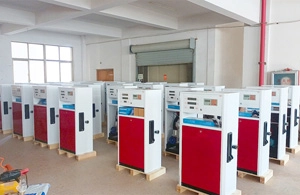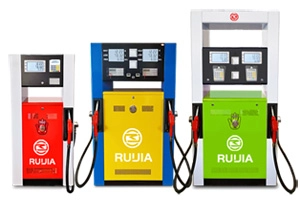- 20+ Years Of History
- 30+ Countries
- 50000 Yearly Production
American Fuel Dispenser Standards
American Fuel Dispenser Standards: Key Regulations and Specifications (English Overview)
U.S. fuel dispenser standards are governed by federal agencies, industry bodies, and technical specifications to ensure safety, accuracy, and environmental compliance. Below is a synthesis of critical standards and their requirements:
1. SAE ARP5904-2002**
Title: Aviation Fueling Systems - Icing Protection for Fueling Nozzles
Scope:
Applies to aviation fueling nozzles used in aircraft refueling.
Key Requirements:Anti-Icing Design: Nozzles must prevent ice formation at temperatures ≤-40°C.
Material Compatibility: Components must resist corrosion from aviation fuels (tested per ASTM D4868).
Pressure Testing: Withstand 3× maximum operating pressure for 10 minutes without leakage.
2. FAA Part 23/25 - Certification Standards**
Title: Federal Aviation Regulations (FAR) for Aircraft Fuel Systems
Scope:
Mandates safety compliance for aviation fuel dispensers and tanks.
Key Requirements:Leakage Limits: Fuel system leakage ≤0.1 mL/min under 1.5× maximum pressure.
Fire Resistance: Enclosures must meet UL 94 V-0 flammability rating.
Electrical Safety: Wiring systems comply with UL 427 for explosion-proof installations.
3. NIST Handbook 133**
Title: Checking the Net Contents of Packaged Commodities
Scope:
Regulates accuracy requirements for retail fuel dispensers.
Key Requirements:Tolerance: ±0.3% for volume measurement (±0.5% for temperature-compensated systems).
Repeatability: ≤0.1% error across three consecutive measurements.
4. UL 1203 - Standard for Safety**
Title: Explosion-Proof and Dust-Ignition-Proof Electrical Equipment
Scope:
Applies to electrical components in explosive atmospheres (e.g., fueling stations).
Key Requirements:Enclosure Integrity: Must withstand 10 ft-lb impact without ignition.
Temperature Limits: Surface temperatures ≤80% of autoignition temperature of fuels.
5. CSA C22.2 No. 22-M1986**
Title: Electrical Equipment for Use in Hazardous Locations
Scope:
Certifies explosion-proof fuel dispensers and pumps.
Key Requirements:Zone Classification: Compliance with Zone 1/2 requirements (intrinsically safe or flameproof).
Grounding: Resistance ≤10 Ω to prevent static discharge.
6. GMW 14859-2006**
Title: Fuel Fill Pipe and Opening - CARB Compliance
Scope:
Ensures compatibility with California’s Stage II vapor recovery systems.
Key Requirements:Vapor Tightness: Fill pipes must limit vapor leakage to ≤15 mL during refueling.
Material Stability: Resists ethanol-blend fuel degradation (tested per ASTM D4868).
7. ASME B31.3 - Process Piping**
Title: Process Piping Design and Installation
Scope:
Guides fuel transfer piping in dispensers.
Key Requirements:Pressure Testing: Hydrostatic pressure tests at 1.5× design pressure.
Corrosion Protection: Piping coatings must meet NACE MR0175 standards.
8. EPA 40 CFR Part 60**
Title: National Emission Standards for Hazardous Air Pollutants (NESHAP)
Scope:
Limits volatile organic compound (VOC) emissions from fuel dispensers.
Key Requirements:Stage II Vapor Recovery: Mandatory for gasoline dispensers in ozone non-attainment areas.
Leak Detection: Monthly monitoring of vapor recovery systems.
Compliance and Certification
FAA Certification: Required for aviation fueling systems.
CARB Compliance: Mandatory for dispensers in California.
Testing Bodies: UL, CSA, and NSF International conduct conformity assessments.
Accessing Standards
Official Sources:
Purchase from SAE International, FAA, or CSA Group.
Third-Party Translations:
China fuel dispenser (https://www.cnruijia.com),professional fuel dispenser manufacturer.
Key Differences from Non-U.S. Standards
| Aspect | U.S. Standards | EU/China Standards |
|---|---|---|
| Vapor Recovery | Stage II mandatory in ozone zones | Optional or Stage I/II in EU |
| Electrical Safety | UL/CSA focus on explosion-proofing | ATEX/GB/T 22380 for Zone classifications |
| Accuracy Tolerance | ±0.3% (NIST) | ±0.3% (China) / ±0.5% (EU) |
For detailed implementation, refer to the full texts of SAE ARP5904, FAA FAR Part 23, and NIST Handbook 133.







